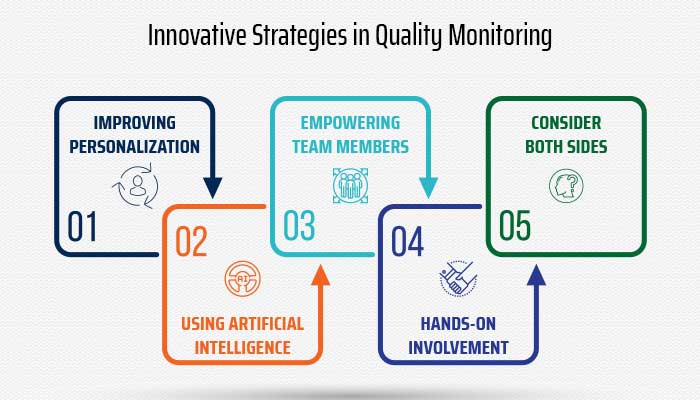Quality monitoring plays an indispensable role in ensuring top-notch performance in contact centers. There is no better way to judge customer satisfaction and ensure customer service representatives contribute to the overall company goals. Unfortunately, companies can become so caught up in a formulaic interpretation of call center quality monitoring that they forget the importance of flexibility, personalization, and customer expectations.
Yes; contact centers serve a specific role in a business model. Still, it does not negate the fact that this role is based on building interpersonal relationships with customers. Scripts and checkboxes are helpful here, but there are more innovative ways to update your call center monitoring framework.
Traditional Call Center Quality Monitoring
Call quality monitoring experienced major changes over the past few decades. Most of these focused on how companies route calls and their ideas of what personalization meant. Traditionally, the focus was on using the customer’s name a certain number of times and showing empathy. Team members then used checkboxes and scripts to ensure they met specific criteria that were applicable to every call.
The end result of this was forced interactions. Sometimes those scripts kept customers on the phone while they were in a rush to resume their daily activities. The scripts were also not always appropriate fits for each scenario.
Still, team members felt pressured to use them. They continued to check their boxes even when they knew better. Otherwise, they might sacrifice their performance reviews.
Innovative Strategies in Quality Monitoring
In more recent years, customer experience professionals realized that these checkboxes and scripts often did more harm than good. Team members could check off everything on the list and get great performance reviews, but customers might leave completely opposite feedback of the team member and the company overall. This indicated that there was something wrong with the formula and that it needs changing.
1. Improving Personalization
Many call centers started by providing additional tools for team members. Team members used these to better personalize the customer experience. As Forbes notes, managers realized that the key to better sales was finding out what style, phrasing and overall content worked best. This differed across various demographics, and sometimes, from customer to customer.
2. Using Artificial Intelligence
These quality monitoring improvements came from better data management systems combined with artificial intelligence. The most advanced AI systems not only collect and analyze data but do so while the call or chat is taking place. This gives managers the opportunity to intervene before a negative interaction escalates. AI systems also provide specific information on the customer.
3. Empowering Team members
Putting more information in the palm of team members’ hands helped to empower them to make better decisions. It also freed them from the script, so they could use human intelligence to decide the most appropriate solutions to unique situations that occurred.
4. Hands-On Involvement
The International Customer Management Institute believes that side-by-side quality monitoring is most effective. This provides direct insight into how a team member handles a call, preferably without using your own headset. This shows trust in the team member and may help to alleviate any nervousness. Make notes and discuss the call with them after its completion.
5. Consider Both Sides
One of the main drawbacks that caused call center managers to become so focused on checkboxes in the past is that companies failed to consider the customer’s perspective. It is much better to think like the people you serve. What do your customers want? How and where do they want to be served? This should be the starting point for quality monitoring and solutions.
The Combined Roles of AI and Human Intelligence
As AI continues to move into fields that require human intelligence, workers and customers alike worry that AI is replacing humans. AI does play an invaluable role in monitoring call center performance, but it could never replace human beings. Here’s one good reason: customers would make their dissatisfaction known and businesses would fail.
When customers are faced with a difficult problem and call or start a chat to get help, 55% of them want to speak to a real human being. This has become a marketing tactic at many companies now. Some have even done away with call routing. When you call, a human being answers the phone directly every time.
At Etech, we’re in the people business. We rely heavily on technology and value the insights AI brings to the table. Even so, we value human interactions and building relationships far more. AI just helps real people do their jobs more efficiently. Contact us for more information on how we use AI to improve our quality monitoring and interpersonal connections.
